
Global Pricing Objectives And Strategies: What’s Next From Telstra? 📲
Did you know that we now spend 85% of our time on our smartphones? A staggering statistic that has changed global pricing objectives and strategies in Australian telecommunications and the entire telecommunications market forever.
>Download Now: Free PDF How to Drive Pricing Strategy to Maximise EBIT Growth
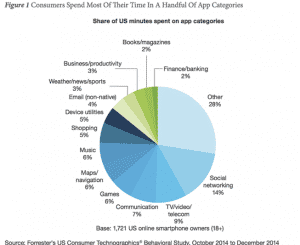
A quick telecommunications market analysis shows that we are spending most of our free and working time on our phones. We are all well and truly hooked on living our lives through a screen, without even really noticing how much we have changed as a consequence.
Because of our phones…
How we buy stuff has changed. How we communicate and interact with each other has changed. And, how we think about and prioritise our lives have changed.
Telecommunications market research shows we are no longer happy with what Optus and Telstra used to offer us. A basic telecommunications system:
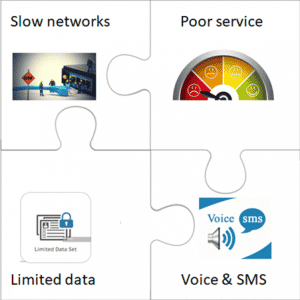
We now want Telcos to come up with a bigger, better-digitised offer — a diversified telecommunications technology service.
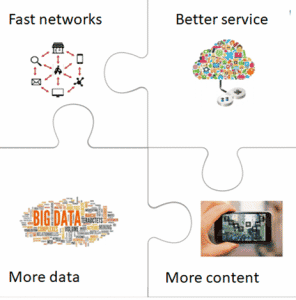
The question now is: Do marketing plans for telecommunications reflect this change in customer preferences, values, and buying behaviour?
In this article, we will take a look at the challenges of telco industries and telcos’ global pricing strategy and objectives. As an example, we will provide you with Telstra’s global pricing strategy and objectives. By the end of this article, you will know the strategic plan pricing of telcos.
Telecommunications industry challenges 2019
Possibly, but not fully; giving customers what they really want will take time. Telcos groups are not digitised, technology businesses yet. They are still fundamentally a brick-and-mortar communications services business.
Even T-Mobile who is light years ahead of the Australian telecommunications market is struggling to provide a faster, better technology-based telecommunications system. Only last April, T-Mobile announced their plan to spend $26B merging with Sprint Corp to speed up connection time and download speed. They are spending big money on super-fast wireless communications (and the rights to wireless spectrum) to offer customers the luxury of even more video content on their phones but without the usual download issues and delays.
However, getting from a communication services model to a technology services model is not easy at all and requires partnerships with the right high-tech providers. And this is what T-Mobile is doing before all the good partnerships are tied up.
But most telco operators are no way close to T-Mobile. Most telco operators are finding it quite difficult to catch up with their customers’ rapidly changing buying behaviours and expectations. Very few operators are thinking about who they should partner to grow and scale their business with.
In fact, for the first time in ten years, telecommunications industry revenue and cash flows are under pressure. Telecommunications industry revenues are steadily falling. People simply don’t want and need the core offer of voice and SMS as much as they used to. Many telco operators global pricing objectives and strategies will have to change.
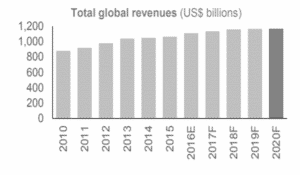
Digital is also proving to be CAPEX demanding for telcos. For example, costs are increasing as they make huge invests of billions of dollars in better technology like the NBN rollout, Big Data analytics, Content Video, Platforms, Cloud, and Enterprise systems.
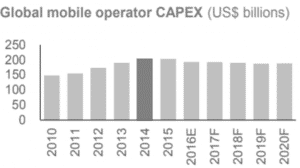
Telcos pricing strategy is also causing quite a few financial issues too:
Not only is the core telcos offer just not that appealing to customers anymore. Pricing plans are overly complex and not driving customer usage.
Many telco operators are at the cliff’s edge right now.
Not only are:
- Revenues declining
- And CAPEX increasing
The telecommunications market is now:
- Highly saturated
- Competition is intense
- And telecommunications mergers and acquisitions have taken a dramatic turn.
Many of telco assets are losing value overnight. Telstra probably wants to sell off old assets to keep ‘cash flow strong’ during the transformation. However, they are likely pretty keen to sell off old assets and shares in businesses with a limited shelf life in the next generation, technology services telecommunications market.
Telstra’s global pricing objectives and strategies
But where are Telstra investing now? Well, the new global pricing objectives and strategies for Telstra are now focused on understanding their customers and investing in the post NBN rollout.
Last year, for instance, Telstra announced their full intent to invest in the post NBN rollout.
Why? Well, if data is the new oil, then the business that controls data in the telcos market is the one in control of their market.
Now, to give you a sense of urgency for change in the telco’s market, last June Telstra Australia announced that their strategic objectives had changed and that they were now focused on:
- Creating a new wholly-owned infrastructure business unit
- Radically transforming customer plans and pricing
- And massively reducing their cost base to maintain healthy EBITDA figures of $8.7- $9.4B for 2019
In other words, Telstra has decided to leave their old business model behind them and create a whole new technology services business to compete in an evolving and more digital market.
As you can imagine, these new objectives are going to have an enormous impact on their business. In particular, their:
- Telecommunications strategic plan for pricing
- Business strategy
- Staff
- Customers
I’ll go through each one by one to explain…
1. Telecommunications strategic plan pricing
Starting with telecommunication strategic plan pricing, Telcos will almost certainly have to extend their existing core offer and subscription-based model; and replace it with a new value-based pricing strategy. This will mean a complete price architecture re-design.
For example, they’re pricing team will now have to create:
- Simple mobile phone price plans that drive customer usage
- Digital bundles that customer’s want. Combining media, financial services, location services, and communications.
Including:
- Creating fewer but better add on options to upgrade and upsell
- Removing charges
- Less tactical discounting practices (more price discipline)
- And, more structured and targeted weekly promotions and offers
Pricing is a critical lever for the digital telco transformation. However, before they change their pricing, they’ll have first to make the basic decisions about where they’re going to position their new technology services business:
Are they going to be a content provider or target specific customer segments?
Or, are they going to use advertising to generate more revenue or are they going to use a subscription-based revenue model?
2. Business Strategy
Telco groups will have to free up huge amounts of cash flow to pay for the whole digital transformation. Which means:
- Selling off older assets
- De-linking from costly operations
- Market consolidation with numerous M&A deals
3. Staff
Telco groups will certainly have to actively drive a meaningful and significant culture shift in the business to re-energise the workforce and accelerate learning agility and adaption.
As they begin to restructure the business, they should also have targeted talent management and recruitment system for pricing and revenue management teams in place to find and hire exceptional leaders of the future before the competition does (at every level of the business C- level and grassroots)
They’ll also have to:
- Re-design team and organisational structures. Ensure departments and teams are no longer working in silos, but rather, openly and freely collaborating and learning from successes and failures.
- Remove old roles
- Change existing teams and roles and make very difficult human capital decisions
Telco operators will almost certainly have to establish an agile technology media organisation, separate from the core business, equipped with new and extensive media capabilities and analytical skills.
Based on our experience of helping business set up and recruit pricing teams, we know that finding and hiring the best pricing and commercial leaders (executives, managers or analyst) is not easy at all. Our experience and research indicate that it is far more common for businesses to compromise on talent and hire pricing leaders that are, let’s say, ‘more technically minded’ with substantial gaps in their leadership ability and strategic thinking.
4. Customers
Finally, telco groups will also have to actively invest in their analytical and pricing skills to understand their customer behavioural patterns, values, and expectations of them as a new technology business.
This means:
- Understanding customers’ changing needs, values and expectations
- Improving their experience in different channels
- Developing a coherent program to migrate customers to digital online channels
- Optimising customer offer, pricing plans, and customer experience accordingly
Admittedly, understanding customers is not easy. But, many businesses from our experience lack a detailed telecommunications marketing plan to execute global pricing objectives and strategies. Including a value-based approach focused on what customers want. This often means many companies miss growth opportunities because they struggle to see potential threats fast enough to established revenue.
Implications
Consequently, looking at the forecasts for network traffic, it is clear that there’s an abundance of reasons for moving to a technology services model.
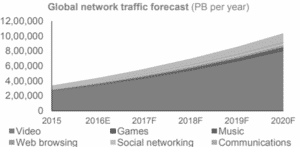
It is clear that Telstra foresees an irrevocable digitalisation of telecommunication and are now investing heavily in technology and control of data to maintain their lead position in the future. In the past and even now, there was and remains to be a lack of knowledge within Australian telecommunications companies of digitalisation and how it will transpire (which is inevitable really considering this is a completely new market.) However, it is certain that any changes in global pricing objectives and strategies in the telcos market will have a direct impact on business models and telecommunication marketing plans.
The telcos market globally is clearly at a crossroads. Above all, the decisions they make now will have a direct impact on their profitability, their staff, their customers and their future success in a new market.
Firstly, the subscription-based model and basic core offer (Voice & SMS) have now run its course in mature markets, and telcos have no choice but to change their global pricing objectives and strategies.
Secondly, the new technology service model that they are moving to is great, but it also requires a huge upfront investment in technology. An area they have very little knowledge and experience.
Above all, many telcos businesses are still not set up for this level of change. They may not be agile enough to implement global pricing objectives and strategies. They may not have the right mix of people to deploy analytical skills across the business.
〉〉〉 Get Your FREE Pricing Audit 〉〉〉
Conclusion
Making significant improvements to pricing, cost, capital infrastructure, and culture is no longer an option for global pricing objectives and strategies in the telcos market. Therefore, it’s a priority in an industry experiencing massive disruption and declining revenues.
Telcos will have to spend time and resources understanding sources of customer value to develop a coherent pricing program to migrate them to digital channels.
They also have to spend time and resource up-skilling their workforce and bringing on new talent.
However, telco companies that do it well, will not only attract more customers, but they’ll also enjoy the lion’s share of the profits and be in the position to create new growth.
Click here to access your free pdf guide on driving pricing strategy in your business.
For a comprehensive view on maximising growth in your company,
Download a complimentary whitepaper on How To Drive Pricing Strategy To Maximise EBIT Growth.
Are you a business in need of help to align your pricing strategy, people and operations to deliver an immediate impact on profit?
If so, please call (+61) 2 9000 1115.
You can also email us at team@taylorwells.com.au if you have any further questions.
Make your pricing world-class!
Related Posts
Leave a Reply Cancel reply
Categories
- marketing strategy (26)
- Organisational Design (14)
- Podcast (114)
- Pricing Capability (87)
- Pricing Career Advice (10)
- Pricing Recruitment (19)
- Pricing Strategy (290)
- Pricing Team Skills (13)
- Pricing Teams & Culture (24)
- Pricing Transformation (47)
- Revenue Model (25)
- Sales Effectiveness (27)
- Talent Management (7)
- Technical Pricing Skills (35)








